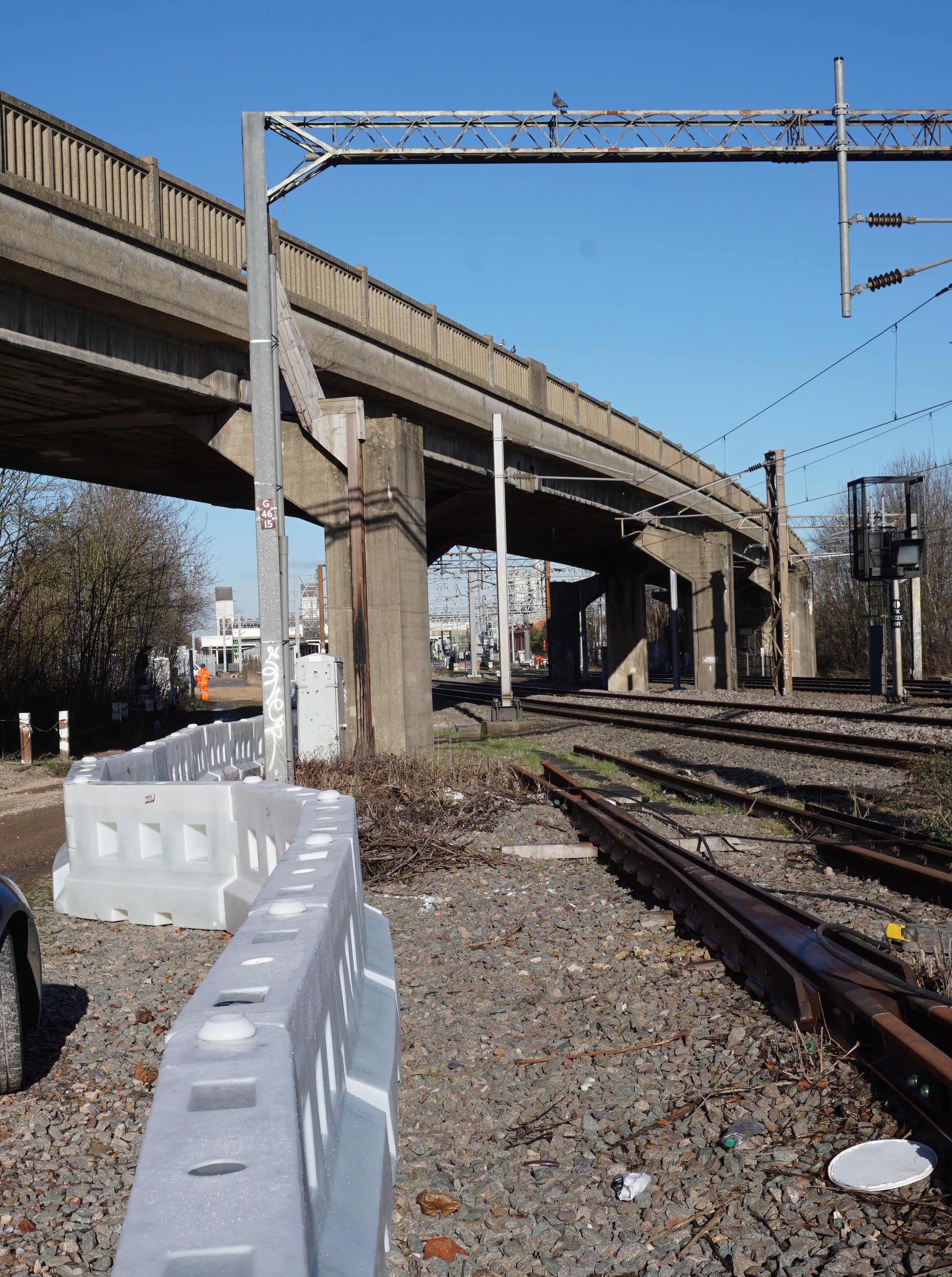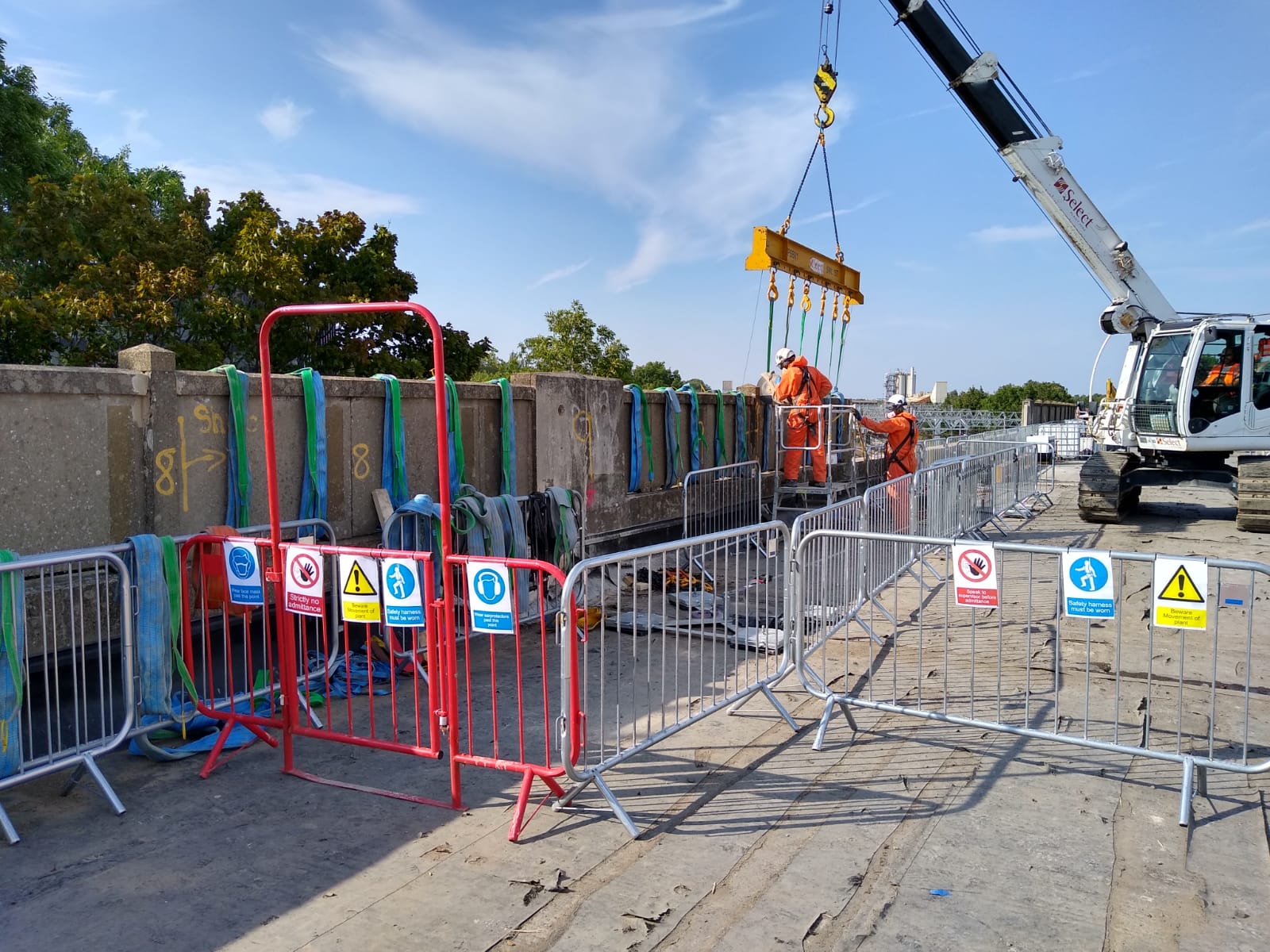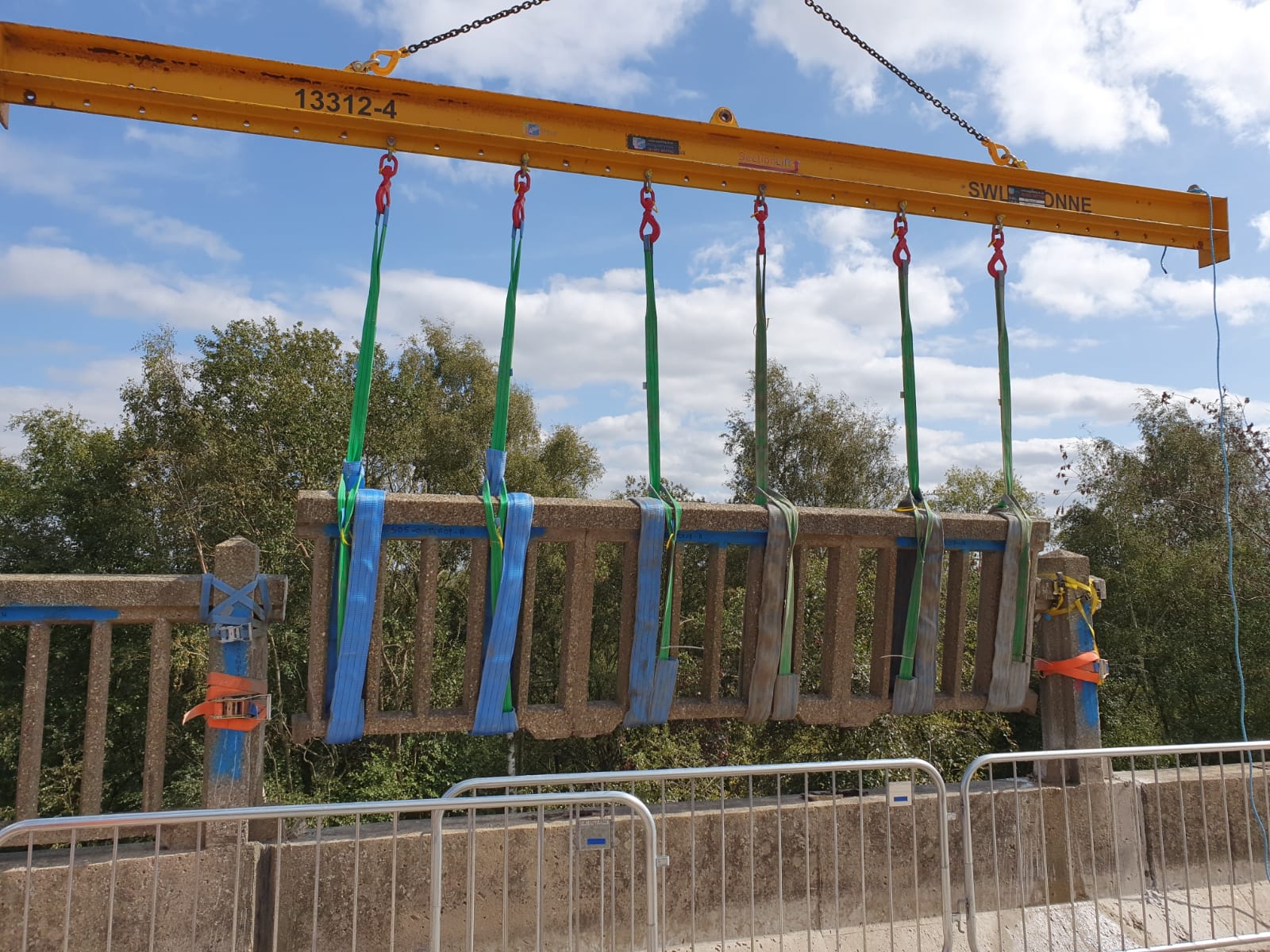 Freyssinet was employed by East West Rail Alliance under an ECI-type contract to refurbish the 37-span Bletchley flyover which carries the East-West Railway over the West Coast Main Line (WCML). The flyover was due to be repaired and upgraded to suit the needs of East-West Rail plan to connect Oxford and Cambridge via Bicester and Bletchley.
Freyssinet was employed by East West Rail Alliance under an ECI-type contract to refurbish the 37-span Bletchley flyover which carries the East-West Railway over the West Coast Main Line (WCML). The flyover was due to be repaired and upgraded to suit the needs of East-West Rail plan to connect Oxford and Cambridge via Bicester and Bletchley.
The reinforced and prestressed concrete flyover was opened in 1960 and is in good condition for its age but the bearings are life-expired and need to be replaced. Freyssinet is developing jacking methods to enable this to happen and are assisting with a number of early works packages to investigate the condition of the structure and to prepare for the main works.
One of these packages concerned the removal of parapets over the August Bank Holiday weekend. Freyssinet staffed seven shifts from 22:30 on Friday 23rd to 08:00 on Bank Holiday Monday 26th August in order to remove precast concrete parapets from the part of the flyover that crosses the WCML. As this is Europe’s busiest mixed-use railway, possessions are hard to come by so it was important to achieve as much productivity as possible while the lines were closed. Freyssinet practised the parapet removal in the weeks leading up to the possession on spans that were away from WCML, so that personnel were trained and equipment tested. This allowed the method to be perfected and in the possessions, panels were lifted out in groups of three with the aid of a lifting beam.
The parapets had to be removed as some of them had deteriorated badly, with local reinforcement corrosion causing spalling, and rusting of the fixing dowels weakening the connection of panels to the bridge.

 The method consisted of supporting the panels with the crane, diamond sawing and coring to sever the connections to the bridge, lifting the panels free and removing them to a temporary store, for later crushing and recycling. The Freyssinet and EWRA teams worked together in a fine example of collaborative working with approximately 100 workers attending over the weekend, arranged into three 8-hour shifts, with a double-shift put on at nights to suit the all-lines blocked rail possession. The team excelled expectations by removing 194 elements compared with the programmed 99.
The method consisted of supporting the panels with the crane, diamond sawing and coring to sever the connections to the bridge, lifting the panels free and removing them to a temporary store, for later crushing and recycling. The Freyssinet and EWRA teams worked together in a fine example of collaborative working with approximately 100 workers attending over the weekend, arranged into three 8-hour shifts, with a double-shift put on at nights to suit the all-lines blocked rail possession. The team excelled expectations by removing 194 elements compared with the programmed 99.
Previous news: Barn owl discovered at Bletchley Flyover
